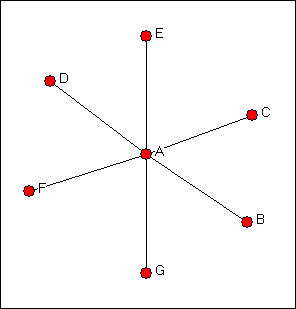The Design Brief
What is a design brief?
A design brief is the document that gets a design project started. Let’s use an overly simplistic example from a professional setting. Imagine The Beer Company is losing market share to microbreweries and they need to design a new product. They write a design brief outlining their wants and goals for the design team. Several features make up a design brief, and it’s more of an art than a science, but consider The Beer Company simply asks a design team to create a new ‘authentic’ looking beer label. From the brief, the design team does research, brainstorms ideas, and designs a new beer label.
Having a good quality design brief is really important.
If it’s worth doing a design brief at all, it’s worth doing well. Because we’re all volunteering our time on this project, I think it’s important that we make sure we’re working on well-defined design briefs that we’re passionate about.
Thinking back to The Beer Company, there was a key stakeholder that wanted something - the beer company wanted an ‘authentic’ beer label designed for their product to reclaim a lost market. In ProjectEvolve, we have no key stakeholder, we have no market we’re trying to capture - our decision to create something is entirely autonomous, it’s whatever we want.
Our design briefs
This is a proposal, I’d love your input. If everyone is okay with it, I’ll send team arrangements and materials on Wednesday Dec 16th.
Because ProjectEvolve is a result of The Listserve, we inherit attributes that give us a certain architecture. This architecture helps suggest some constraints to apply to our design briefs. Consider this fill-in-the-blank, inspired by our collective survey responses:
How might we use the internet and a global community of strangers to ____?
From the survey responses, there seems to be many great, but nascent ideas around the blank. I’d love to explore this further in groups. To do this, our first exercise in randomly assigned teams (14 teams of 10 people) will be to create design briefs - to define what we want and our goals.
Each team will be asked to create two ‘How might we…’ statement inspired design briefs. You can simply fill in the blank above, or completely re-write the question. Let’s plan to have these done by Jan 10th. Afterwards, we’ll share the design briefs between teams, select ones to work on, and jump into design thinking.
Very unscientific findings from my analysis of the surveys:
Many people seemed interested in the “community of strangers” feature to The Listserve. Top results of a Google search for “community of strangers” shows news articles for the “Human of New York” project. Someone in our group is also doing a photo project called 100 Strangers.
Both The Listserve and Humans of New York are similar in that they are networks that feature a one-to-many interaction. That is, one person creates content and delivers it to many viewers.

It also seems like this group wants to design for growth. Like an organism that grows and adapts to its surroundings through evolutions. But how?
For this, I like to think of communication network features that could impact this - mainly, the frequency and quality and type of communications. Consider all the potential ways you could redesign how a network communicates. What if the frequency of The Listserve was once a week? What if you had a month to think about what to write rather than 48 hours? Would we get better content or would the writer wait until the last minute anyways? What if Mondays were reserved for emails from people in North America, and on Tuesdays people from Europe provided their own insights? Would that increase diversity of emails? What if communication wasn’t through wasn’t a mass email but instead you are paired at random with a group of 6 strangers? For just $15/year per person, every winner could also win $1,000 along with the option to write an email. There are limitless combinations.
What would these networks look like? How might they ‘grow’? How would the content change relative to the network structure? Which type of network would result in stronger connections? And, which would help us learn more about each other’s cultures?
Some (sort of) related materials that I found interesting:
Wikipedia - Social Network Analysis
Wikipedia - the Uses and Gratificatins Theory (why people consume certian types of media):